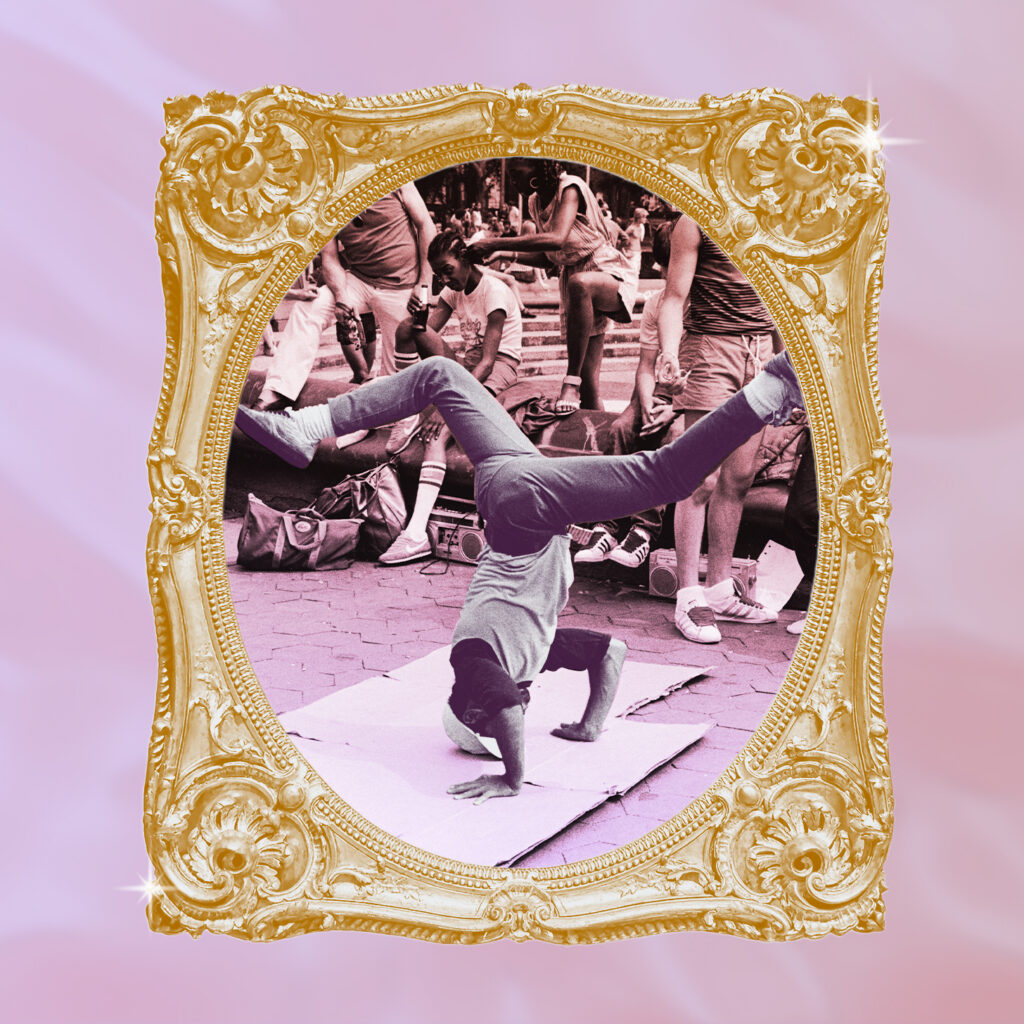Hip-hop culture penetrates every aspect of people’s lives, from the way they dress and speak to walk and dance. Though mostly associated with music, hip-hop from its inception has always been a lifestyle and its own subculture within Black (and eventually other minority) communities around the world. When hip-hop emerged in the Bronx during the 1970s, there were four key elements of the scene: DJing, rapping, graffiti, and break dancing. Though break dancing gained exposure because of hip-hop music’s popularity, the inspiration and origins of the dance style date back to the 1950s.
Today, hip-hop dance encompasses a variety of elements and styles, the most common being break dancing, popping, locking, krumping, and freestyle. Now, hip-hop dance is offered in dance studios throughout the world, hip-hop dance crews battle on major networks and streaming services, and we have a multitude of movies centered solely on the culture and lifestyle of hip-hop dance.
Hip-hop dance has evolved and expanded with the music of its genre, crossing over into mainstream “traditional” dance studios and reaching shores far beyond the five boroughs of New York City. Join me on the journey of hip hop’s last five-plus decades, as it’s made its way from the street corners of the Bronx to trending on social media.
- Late ’60s to Early ’70s New York City: Break dancing
- 1970s California: Locking
- 1970s California: Popping
- 1983: Hip-Hop’s First Film, “Wild Style,” Debuts
- Late ’80s and ’90s: Club Battles and Competitions
- 2000s: New Wave of Hip-Hop Dance
- Modern Hip-Hop and Social Media
Related: Diamonté Quiava Valentin Harper Was Hip-Hop Before She Was Ever Saweetie
Getty / Steven Ferdman / Contributor
Late 1960s to Early 1970s New York City: Break Dancing
As hip-hop music emerged in the Bronx during the late 1960s and early 1970s, break dancing naturally evolved with it. DJ Kool Herc is credited for the evolution of this new form of dance, according to Encyclopedia Britannica. He was the first DJ to use two turn tables at once, and his creation of unique beats and extended dance breaks in songs gave performers the space and time to express themselves as the music played freely. Performers without formal dance training found movement in their bodies to match the Funk beat found in hip-hop songs at the time.
Block parties and street dancing enabled this dance style to quickly spread from the Bronx to all five boroughs of New York City and eventually throughout the US. During block parties, DJs would encourage the crowd to dance; attendees would have combinations such as hustle, uprocking, lindy hop, popping, and locking. This mixture of dance styles formulated what we know to be modern-day hip-hop dance.
Getty /Michael Ochs Archives / Stringer
Late '80s and '90s: Club Battles and Competitions
By the late ’80s and early ’90s, hip-hop was gaining more mainstream notoriety, and clubs throughout started to feature DJs in the genre. The incorporation of DJs into the club scene made way for dance competitions to emerge as an organic result. Club attendees would clear out space on the dance floor for different groups to go head-to-head. These impromptu battles eventually led to club promoters highlighting these competitions to get more people into their spaces. The elevation of these competitions enabled hip-hop dancers to stay connected to the genre’s original nature of battling
. We see similar head-to-head battles in other dance genres, such as tap, as well.

